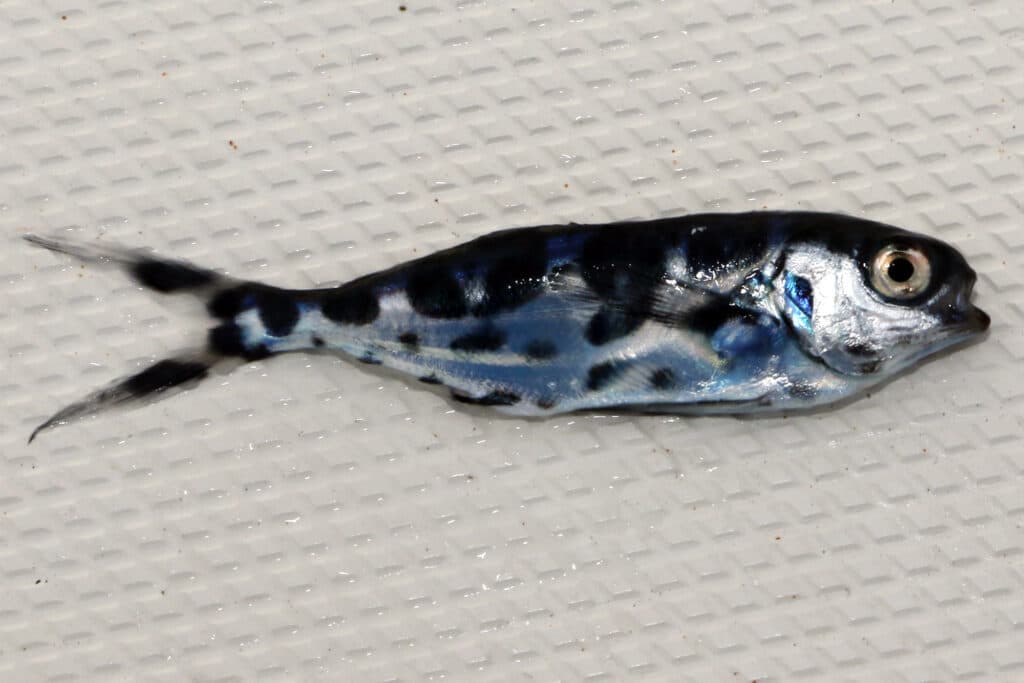
Do you have a photograph of a fish you can’t identify? If so, we’re up for the challenge, and would welcome the opportunity to share your photo and its ID with an international audience of enthusiasts. (Whether published or not, we will personally respond to every inquiry.) Email your jpgs, as large/hi-res as possible, to: fishfacts@sportfishingmag.com.
Anglers who spend much time on clear blue offshore waters — particularly when drifting or slow-trolling — have likely seen stunning little blue-and-silver fish darting this way and that. Seen from above they resemble tiny flyingfish thanks to their oversized pectoral fins. Miami resident Scott Salyers provided this photo, after it fell onto the deck amidst “a passel of pogies” from a castnet thrown off Port Canaveral, Florida.
“We didn’t know for sure what it might be,” he says. The answer: a juvenile man-of-war fish, Nomeus gronovii. It’s a member of the family Nomeidae, the driftfishes.
The concept of niche evolution is beautifully illustrated by this species, common in all warm oceans. It’s called man-of-war fish because, at least when young, it lives in symbiosis with the Portuguese man of war, characterized by its brilliantly colored pink- and-blue balloon-like sail or float and its very long strings of tentacles filled with stinging nematocyst cells. Any fisherman or swimmer who’s been nailed by these can be excused for exclaiming “ouch!” or worse.
The man-of-war fish sets up residence beneath these animals, adrift on the ocean. (Erroneously called jellyfish, man o’ wars are siphonophores — each one a floating community of organisms). Darting about the stinging tentacles, the small fish achieve a good bit of protection from predators, though they’re ever vigilant since they’re not immune to the poison of the tentacles.
So how do they coexist with the venomous, sticky strings? Apparently, it has adapted to avoid the tentacles by being alert and agile. The species also has more vertebrae than is typical, making its body more flexible, and relies largely on its big pectoral fins, an adaptation typical of species that must be particularly nimble. Beyond coexistence, there’s evidence that the man-of-war fish may get some sustenance from its partner, nibbling on smaller tentacles.
Symbiosis suggests a two-way street, so the man o’ war presumably gains something from the man-of-war fish swimming freely about its tentacles, most likely luring in other fish with a false sense of security to blunder to their death.
All this describes juveniles, and that’s all we see of Nomeus gronovii. This is because as they grow to be adults — to 15 or 16 inches in length — they descend to live near bottom in as much as 3,000 feet of water. At that stage, the man-of-war fish hardly resembles the colorful, elegant little form it took as a juvenile, looking more like a greyish, somewhat elongate bluefish.








